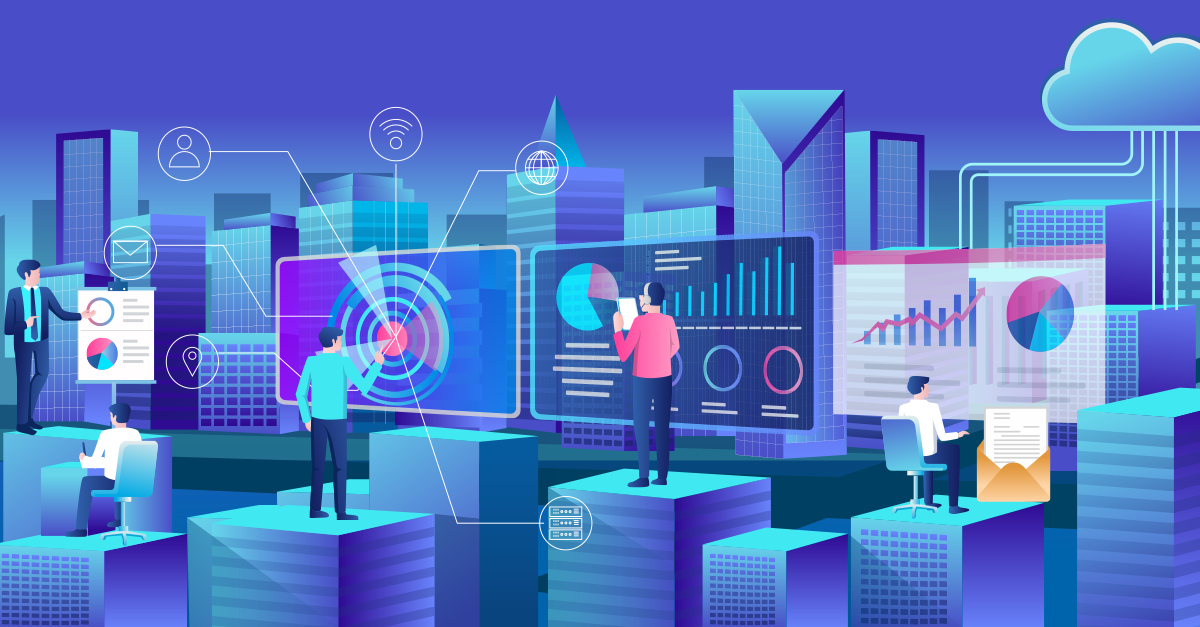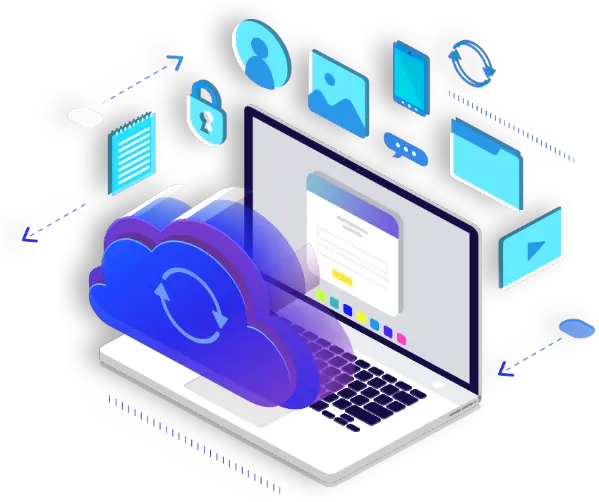Meeting the Digital Transformation Challenge
In this, our third and final post in our three-part series on the stages of digital transformation, we’ll explore key steps and advantages of digital transformation and what it means in practical terms for your company.
But first, let’s quickly review stages one and two for an overview of the entire process.
Recall that digitization of your data is the first stage in digital transformation and entails converting paper documents into PDFs, scanned photos into jpegs, VHS tapes to digital files, and music cassettes and CDs into MP3s. Digitization makes your data easily accessible and shareable on computers, tablets and smartphones, and is to your legacy document processes what Amazon Kindle is to libraries, what Spotify is to record stores and what Netflix is to movie theaters.
The second stage is digitalization, which requires digitization to occur first. Digitalization lets you leverage digital tools to automate workflows for enhanced efficiency, which enables companies to lower their operating costs. It streamlines your business and raises productivity by converting human-driven processes into quick and agile software-driven tasks. You can also use advanced analytics for deeper visibility and real-time insights into workflows, trends and documentation needs.

Just what is digital transformation?
Digital transformation’s third stage can be defined in various ways, but is essentially business transformation enabled by digitalization. As one would expect, it builds upon stages one and two. However, it is qualitatively different from both.
The key point to understand about digital transformation is that it imposes fundamental changes in your business operations and redirects your focus from the company to your customer. More to the point, it transforms your operations and workflows end-to-end so that your business becomes a digitally connected, customer-driven organization.
Why is customer focus so critical?
Your decision to transform your business into a digital first, customer-focused company is based upon the reality that the world itself is rapidly being digitally transformed. That would include your customers, by the way. Mass customization enabled by large scale data capture and powerful digital analytics allow customers to convey their individual product demands to businesses. This shifts the power to the customer. Just as important, businesses can now deliver on those demands and must do so or cease being relevant.
The reason for that is as simple as it is complex.
As your customers’ choices expand, their expectations continue to evolve with increasingly complex demands. You must continually meet those expectations or lose your customers to those companies that do. Therefore, committing to providing superior customer experience is a necessity. That means making your business and products available to your customers on their terms and in their preferred channels.
That’s why digital transformation turns companies into digitally-driven, customer-focused organizations. It’s what the market demands. Businesses will either digitally adapt or face extinction.
Digital transformation–where and how to begin the third stage in this process?
“Great,” you may be thinking, “but how or where do I start this third stage in the digital transformation process?”
First, your adaptation to an ever-evolving digital world isn’t a one-and-done event, especially in this third stage. Digital transformation is actually an ongoing process that goes well beyond the digitization and digitalization stages. A significant part of that involves integrating (IT) systems with operational technology (OT) systems into a single, coordinated system. This integration is often referred to as IT/OT convergence and is a necessity for digital transformation.
This IT/OTconvergence will transform and optimize your business for greater efficiencies, better customer experience and competitiveness. But it’s not without its challenges. Traditionally, each area has been siloed and managed by separate teams, tools and processes. But even with connected digital devices, capturing, harmonizing and leveraging the data across your IT and OT universes can be a disruptive and significant challenge.
But it is possible. Tools and technologies such as edge analytics, the cloud, artificial intelligence and others can enable real-time actionable insights to help you successfully execute IT/OT convergence and its efficiencies, which is what digital transformation is all about.
A disruptive but strategic decision

Digital transformation is also disruptive in how you think about management, control and security. IT/OT convergence not only radically changes your operations, but also shifts the execution and monitoring of those processes from local to remote control.
Total digital connectivity raises cybersecurity risks and the need for enhanced data flow requirements and controls. Unified governance over all operations is therefore another necessity driven by IT/OT convergence.
A positive culture shift within your business is another benefit that comes with digital transformation. As your processes become more efficient, your employees are relieved of their most menial tasks. This improves morale and makes them more productive, which enables your business to grow.
As difficult and disruptive as it can be, your decision to embrace digital transformation is a strategic one. Every day, more of your customers are embracing the rapidly evolving digital world and demanding that you do the same.
Conclusion
The temptation to put off digital transformation and avoid the disruption, cost and complexity involved is understandable. Digital transformation presents all of those challenges and many others.
But the digital world itself is disruptive, isn’t it?
Technological changes such as the internet of things (IoT) continually challenge us to adapt in our daily lives. Your business systems, operations and profit margins are no less impacted by digital transformation, perhaps even more so. It is, indeed, a brave new digital world.
But don’t worry, we’ll help you get there.
Make sure to follow us on Facebook, Twitter and LinkedIn so you won’t miss this important series or other helpful tips on how to improve your business processes and efficiencies.
